
Bob Fernandez was a sailor assigned to the USS Curtiss on Dec. 7, 1941. “I wish that they never would have come”
- Share via
- Fernandez, now 100, was 17 when he joined the Navy just months before the attack on Pearl Harbor.
- A Japanese warplane crashed into Fernandez’s ship, the USS Curtiss.
- It’s believed there are fewer than 20 Pearl Harbor survivors still alive.
LODI, Calif. — Questions about that day come year-round but nothing like November and December. The answers have grown into stories, now briefer than before but still mostly complete. Details sometimes get jumbled, but no one complains. For 100, everyone says, Bob Fernandez is doing great.
“You can tell my story if you want,” he says, “but sometimes I’m not all here.”
As much as Fernandez knows his limitations, he is also aware of his obligation.
On Dec. 7, 1941, he was a sailor and stood at a pivot point of history, a moment never to forget when sudden and extreme violence rendered the past irrelevant and the future an open book hinging on the outcome of war.
On a recent morning, Maria Dominguez pours him a cup of decaf, black, two sugars. He’s just woken up. His steps are wobbly as he makes his way to his chair in the living room, where a TV tray awaits with a cookie and three pills.
“Do you remember my name?” she asks.
“Emily? June?”
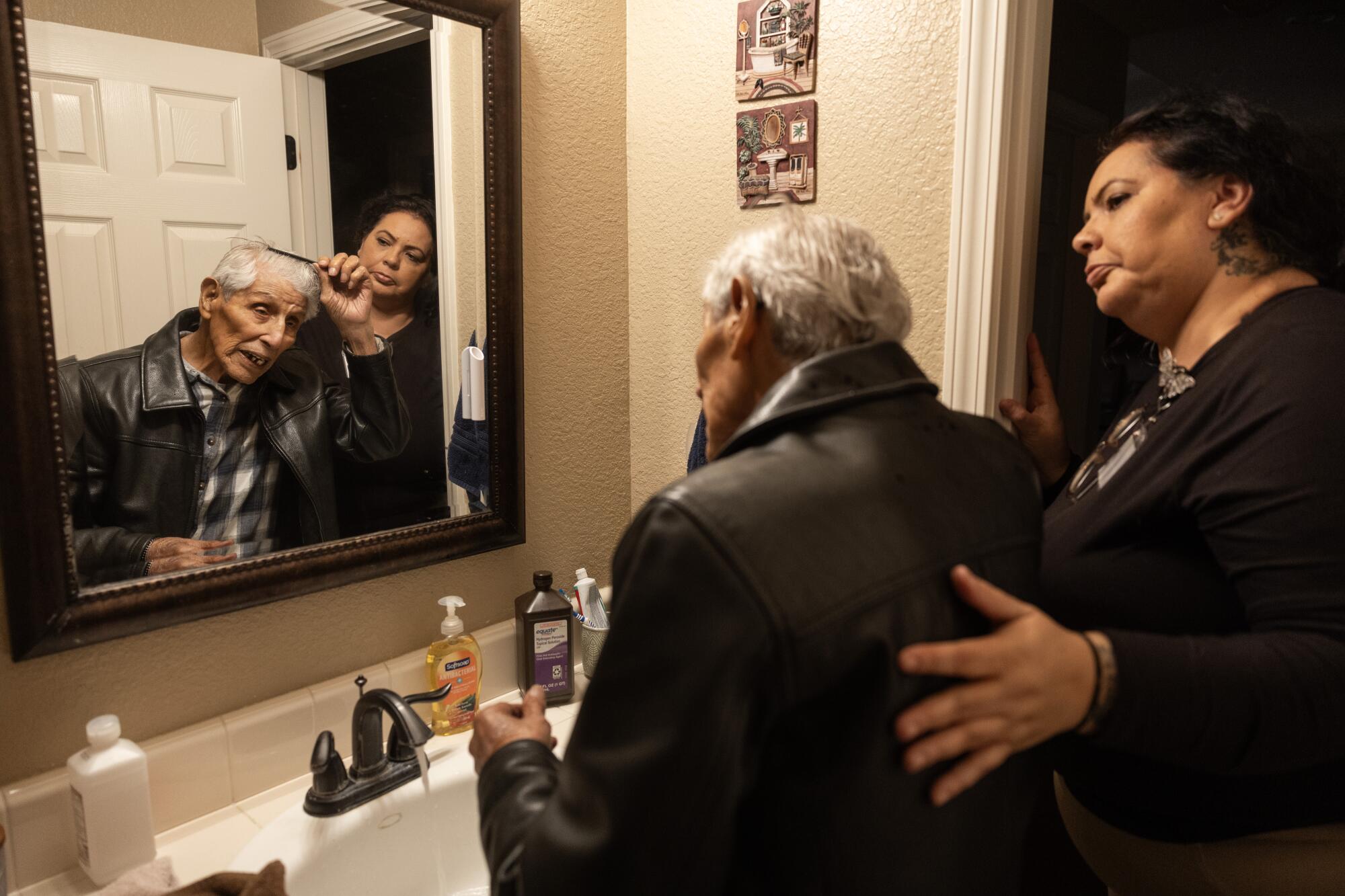
Then he remembers. Maria. His wife was named Mary.
“You took care of her when she was sick,” she reminds him. “You were 90 when she passed.”
Now Dominguez is taking care of him. It’s been just over a year.

He has been called a hero, but he’s not sure about that. He was doing his job just like thousands of others, except he survived when 2,400 service members didn’t. Today he knows he stands for those who can’t — in a brotherhood made more special the smaller it has become.
No one knows how many Pearl Harbor survivors are still alive. Some say fewer than 20. Others say the number is incalculable if civilians are considered. But no matter; soon there will be none, and the memories will recede to the pages of books, entries on the internet and museum exhibits.
“You can tell my story if you want, but sometimes I’m not all here.”
— Bob Fernandez
On the television, Vincent Price is delivering a monologue about Abraham Lincoln during a rerun of “The Carol Burnett Show.” Outside, rain is falling. Fernandez sips his coffee.
Until earlier this year, he had been living on his own. Stubborn independence is, however, a blessing and a curse. After a fall, hospitalization and rehab, he moved in with his nephew, Joe Guthrie, and Joe’s wife, Kimberly, her son, three dogs and four cats.


Joe and Kim adore him. Fernandez was Joe’s best man at their wedding two years ago, and they are eager to help him settle in at their home in Lodi. While they are at work, Dominguez helps fulfill a promise that Joe made 10 years ago when the old man wondered what he’d do when he got old.
As Fernandez tries to remember the events of that bright and sunny morning 83 years ago, the details are fragmented by the passage of time, the reticence of trauma. A few stories he’s repeated enough to get right, but what has faded for him is fading for America as well.
Like the Civil War, like the Kennedy assassination and, one day, 9/11, tragedies once indelible in the minds of all Americans are destined to become one day less so.

Dominguez brings him pancakes, topped by a banana and maple syrup. A young man named Adam pops up on the TV and describes fighting in Afghanistan and getting shot by a sniper. He holds a model of his fractured skull. Disabled American Veterans secured his benefits.
When Fernandez is finished, Maria walks him to the bathroom to brush his teeth and then to change for his morning walk. The tidy three-bedroom home is easy to navigate, and although it is only one story, Fernandez swears his room is upstairs. No one corrects him.
His Cracker Jack navy blue jumper hangs from a hat rack in the entry. Memorabilia are laid out on the dining room table, a memory jog as Dec. 7 approaches: campaign medals, a photo with President Trump, a framed news clipping and a black-and-white of the USS Curtiss.
He first saw the ship in October 1941 resting at anchor in Pearl Harbor, and what a beaut — long and towering, capable of 20 knots, with a complement of 1,200 sailors. Less than two years old, the Curtiss was described as an aircraft carrier for seaplanes, essential to the front line if war broke out in the Pacific.
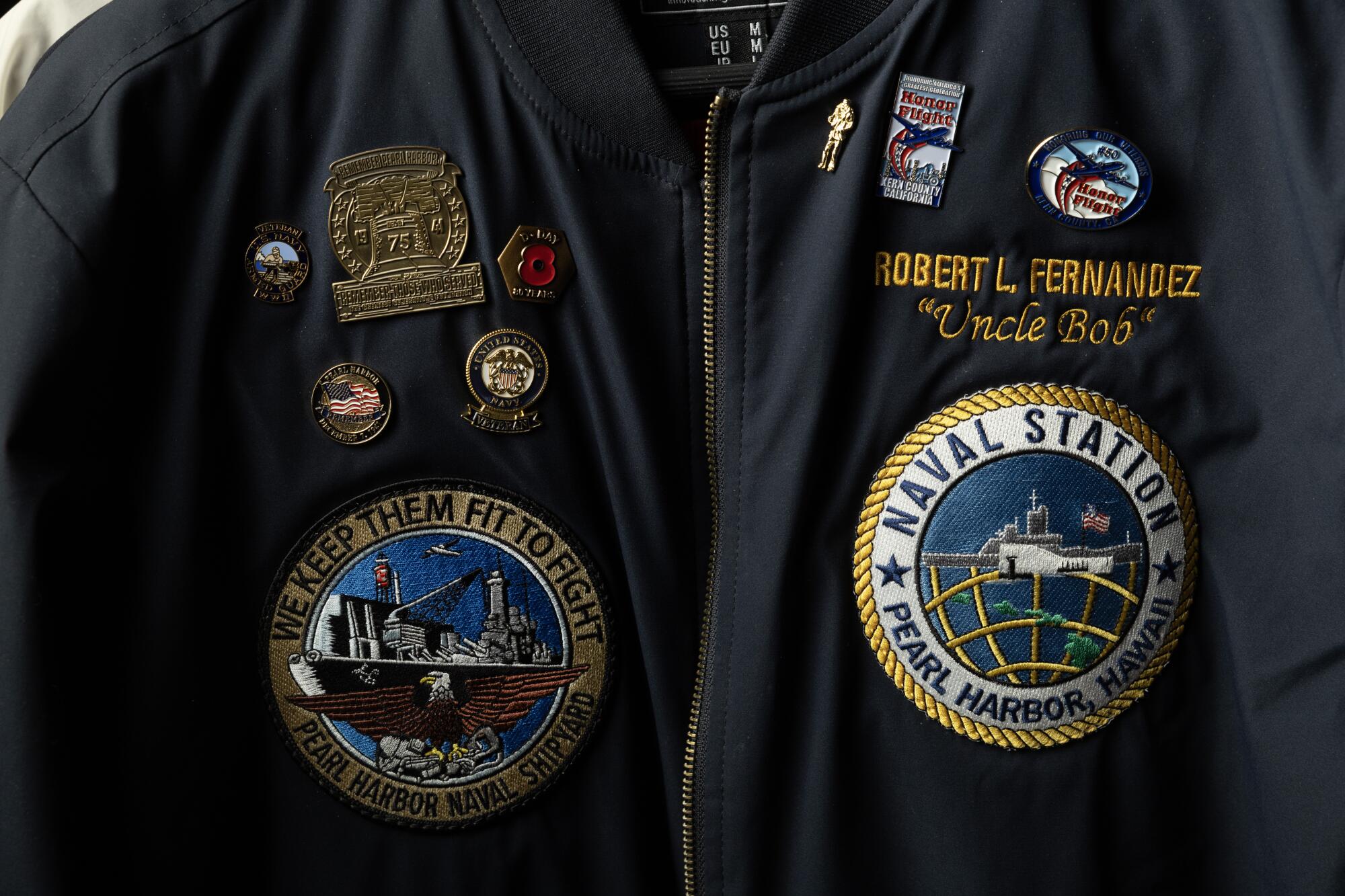
Fernandez had enlisted that summer. He’ll say that he wanted to make some extra money, see the world, but the story is more complicated. He was 17, living at home in San Jose. His father was disabled, a leg lost in a train accident, and he took solace in drinking. Fernandez’s mother bore the brunt of his unhappiness.
Then there was a girl, a little older than Fernandez and pregnant with his child. Three days after his son was born, he signed up.
His dad had suggested the Marines, but he was too young. Only the Navy would take him, $21 a month. He trained in San Diego — to fire a machine gun, position a gas mask, prove he could swim — and shipped out to Hawaii.
No sooner had he found his bunk than the Curtiss put to sea, joining a supply convoy to Wake Island, then to Midway. Fernandez recalls the monotony of swabbing decks before getting a job in the mess.
Everett Titterington, who died at Pearl Harbor, was interred at Riverside National Cemetery after his remains were identified.
On Dec. 6, the ship returned to Pearl Harbor. Two light cruisers and the USS Utah lay off its starboard bow, and Battleship Row, the famed but vulnerable roadstead for the Navy’s mightiest, was on the other side of Ford Island.
After almost two months at sea, Fernandez and his buddies planned to head into Honolulu for beer and dancing, but he had to get through the morning shift on the 7th.
He was serving the officers about a quarter to 8 when he heard the first explosion.

Stooped under an umbrella, Fernandez heads down the driveway with Dominguez beside him. The rain is nothing compared to any disruption in his routine. The more predictable his day, the less agitated he’s likely to become. His sundowning spells leave everyone exhausted.
Dominguez cues Frank Sinatra, his favorite, on her phone. Fernandez starts singing to “My Way,” and when the horns kick in, he adds a little swing to his step.
Age may have diminished his stature, rendered his gait more lopsided, but he has always been light on his feet, whether as a boxer in his teens or, later, a dancer with his wife. He still likes to twirl the ladies around wherever there’s live music playing.
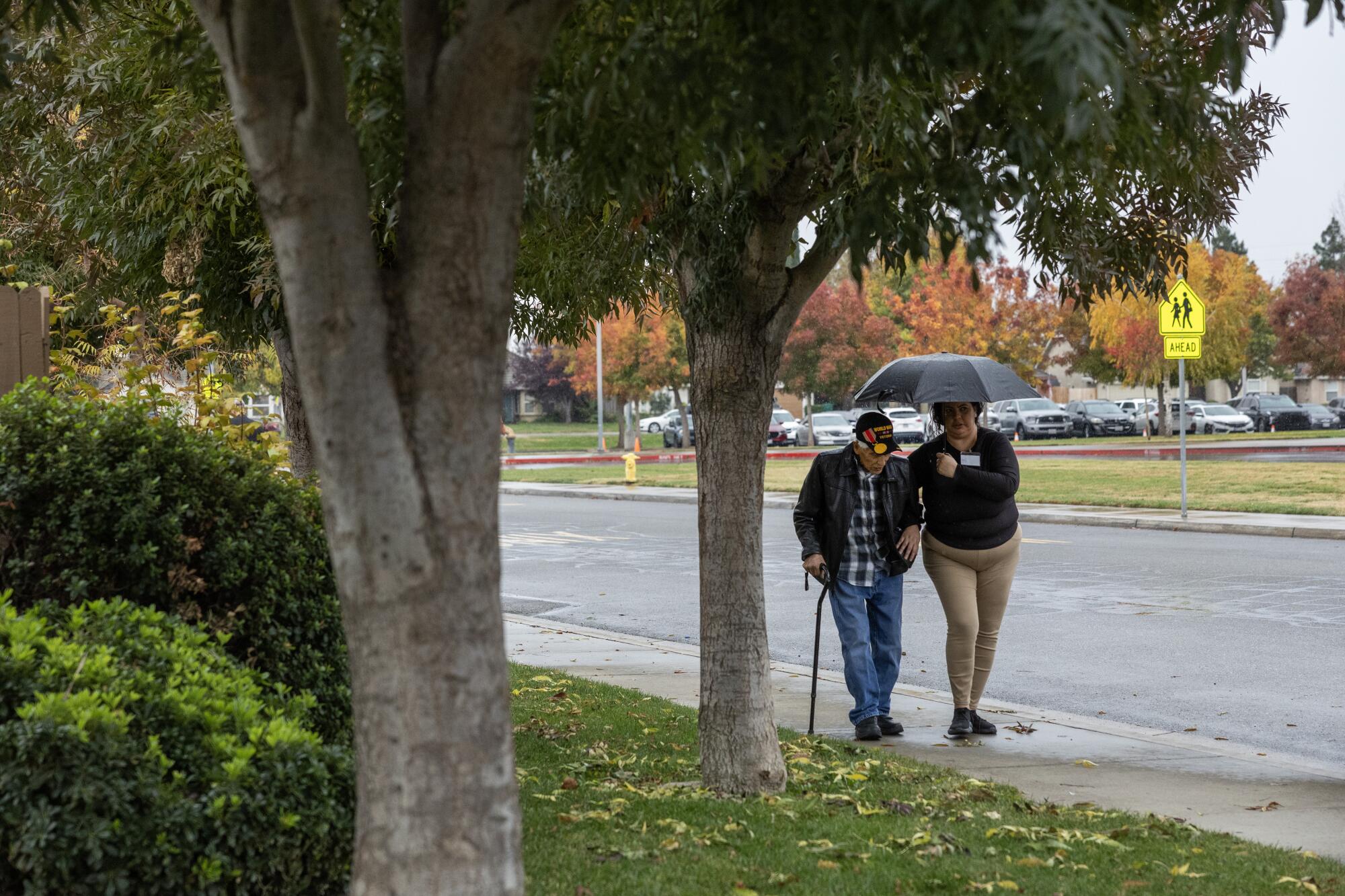
More than halfway around the block, the rain picks up and Dominguez hurries them home. He settles into his chair. She throws a log on the fire and sets out a lunch of Hawaiian barbecue, rice and macaroni. She puts on a western, and John Wayne rallies the troops.

The first explosion came from the direction of Ford Island, but before Fernandez could look, the ship’s alarm started to blare.
“Battle stations, this is no drill!”
The distant drone of planes drew near. Suddenly everyone was running like hell, Fernandez says, and as he raced to his post — across the ship and below deck — he saw a low-flying plane with a large red circle on the fuselage so close that he made out the pilot.
“And he didn’t even look at me,” he says. “He just kept on going.”
Then came the concussive tat-tat-tat of the ship being strafed. More explosions. Across the channel, the Utah and Raleigh were hit. Heavy black smoke gushed from the oily infernos.
Once at his post — the magazine room, midships, three decks down — Fernandez and his crewmates got to work, passing one to another the shells for the .50-caliber machine guns and 5-inch cannons above them. By now the firing was continuous, the Curtiss convulsing with each blast.
“We’re at war,” Fernandez heard someone saying in the confines where they stood. He saw some of his crewmates overcome with fear, knowing that any moment a bomb could slice through metal and reach them, lights out.

Muscles aching from the weight of each 55-pound projectile, the repetition, the heat, Fernandez lost track of himself, too busy to think, too scared to stop, not unlike his time in the ring up against any another flyweight.
“I just did the work I had to do,” he says, “and the good Lord — the good Lord — kept me safe.”
While the Curtiss tried to get underway, the ship never made it out of port. A submarine surfaced 700 yards away. The Curtiss’ 5-inch guns fired on it, and a passing destroyer took it out with depth charges. Then there was a plane, armed with torpedoes, pulling out of its dive over Ford Island. Gunners on the Curtiss fired.
Boom! Boom!
A hit, and its pilot crashed into the ship; the plane’s fuel spread fire across the deck.
The attack was intensifying. Farther astern from where Fernandez stood, a 500-pound bomb landed, piercing three decks and detonating another magazine. The blast killed 18 sailors and punctured the hull. The Curtiss started to take on water. The damage would have been worse if the fuel tanks had been refilled after the ship’s recent mission.

Fernandez doesn’t remember how long he stayed at his station or whether he was enlisted to fight the fires. His memory of that day jumps ahead to night when, exhausted from the battle, he found an empty corner on deck to sleep. When he awoke, he found himself joined by the corpses of crewmates, draped in white linen, beside him. Someone, he thought, must have believed he was dead as well.
Two weeks later, the Curtiss’ commanding officer listed 20 dead, 54 injured and one missing.
Of the ruin of Pearl Harbor, Fernandez says nothing: nothing of the tar-black smoke rising into the blue sky, the giant ships listing at ungodly angles, the Utah capsized not far away, the fireboats streaming water onto the flames, the bodies in the water, the feelings of shock, of rage, the cries for vengeance.
Of the Japanese attack, his sentiment is simple. “I wish that they never would have come.”

By late afternoon, Fernandez is dozing in his chair, mouth agape, hands clasped in his lap. The fire has burned down. Tommy Dorsey orchestrates a soundtrack for his dreams. A biopic about Sinatra — men in tuxedos, young women in bathing suits — plays on TV.
Then Fernandez stirs and extends his hand as if in greeting.

“Are you dreaming, Bob?” Dominguez asks.
“Must be,” he said.
A heavy sleeper in his youth, he was different after the war. He tossed and turned. Any noise woke him, and when he went to talk to someone at the Veterans Administration, he was told he didn’t need any help.
That would come later in his life at a restaurant just north of Merced, where Chapter 10 of the Pearl Harbor Survivor Assn. gathered every other Thursday to play music, swap stories and share in the good fortune of being alive.
“You can’t explain to someone else what you saw unless he’s a Pearl Harbor survivor,” one veteran told a reporter in 1998.
Fernandez was the group’s youngest member. Now he’s the only member and a witness to the irony of remembrance. When he was younger, he was told to move on, probably best not to dwell on what he saw, but the older he got and the more America came to honor the heroism of that day, the more revered he was for what he recalled.
Interviews and invitations followed. Fernandez stood with other veterans on stages. He rode in parades. He spoke to schoolchildren. He told his story on video, which is archived in the Library of Congress, and he has been back to Pearl Harbor on Dec. 7 three times.
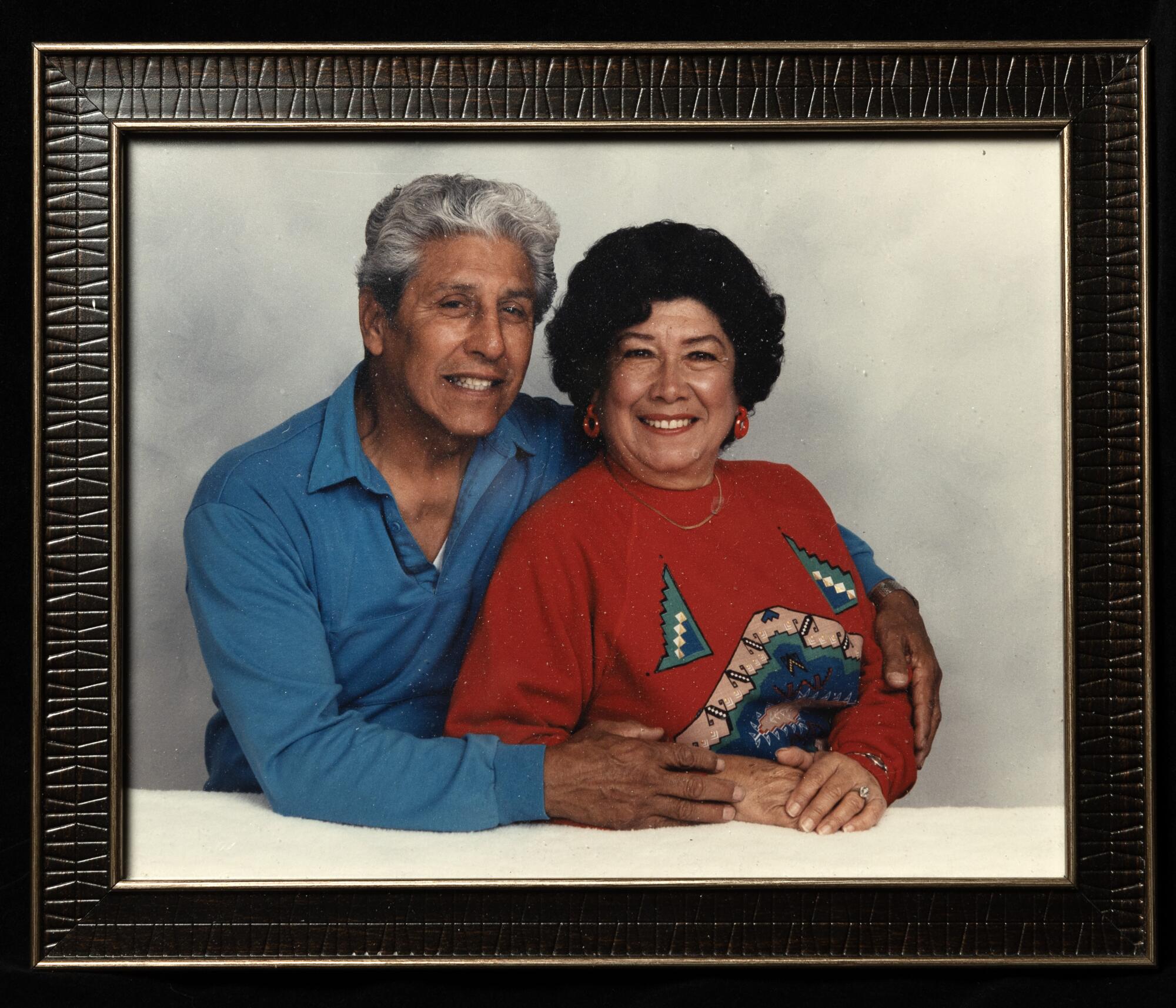
Fernandez stayed with the Curtiss after the attack. The ship, quickly repaired in San Diego, returned to the Pacific theater and was present at Midway in 1942, Guadalcanal and the Solomon operations in 1943, and the battles of Tarawa, Kwajalein, Eniwetok, Saipan and Guam.
But Fernandez stays quiet about those years. His service record shows that in November 1944, he was assigned to the naval air station in San Francisco. When the war ended, he extended his enlistment, got married, had a daughter, divorced, was promoted to piloting small boats, served in the Philippines, and in 1947 was discharged.
Two years later, he met Mary, and they married and had two children. He worked as a forklift driver in the East Bay, retired and moved to Stockton.
He used to think of Pearl Harbor at least once a day, but not so much not anymore.

By 6:30, Dominguez has left, and the Guthries are home from work. Kimberly serves Fernandez a plate of pot roast, lays out his evening pills and keeps him company while he eats. On TV, Sinatra in black-and-white knocks on the door of a speakeasy in “The Joker is Wild.”
Early evenings, his mind wanders the most, as if he’s awake in a dream. Joe and Kimberly let him ramble, politely try to make sense of what he’s saying. Often, it’s related to a distant memory.
“I was born upside down,” he says, apropos of nothing they might understand.
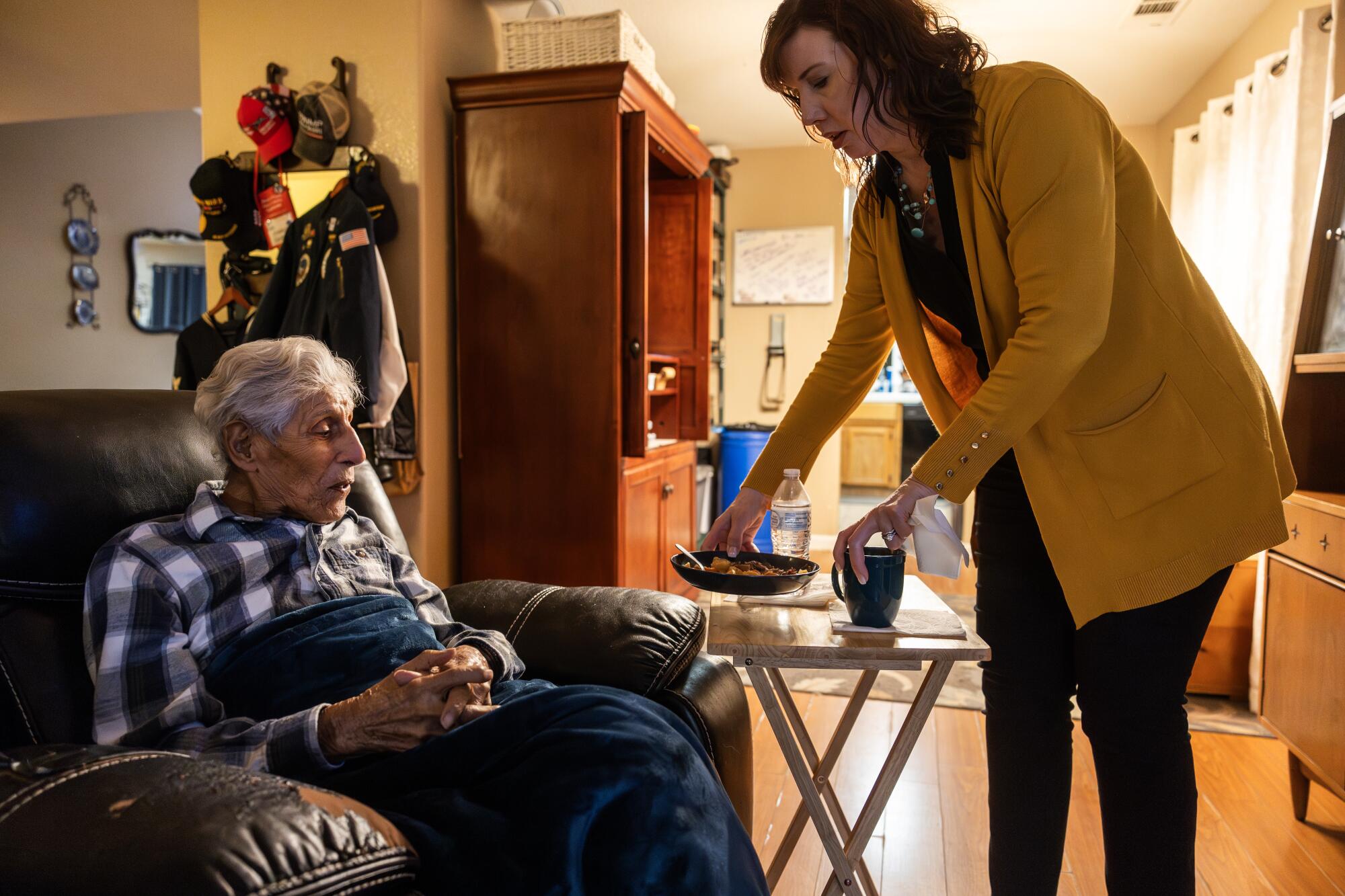
Kimberly teases him. “Well, that explains everything.” He laughs.
They are preparing to take him back to Pearl Harbor for the annual commemoration. Airfare has been arranged, a brief itinerary set. Joe feels it would be meaningful for him to connect with the few remaining veterans and for a divided country to be reminded of its lost unity. Fernandez agrees.
“I just hope there’s no more wars like the one we had and that the whole world could be happy and live right,” he said early in the day.
In days to come, however, they would change plans. Fernandez would be too weak. Hospice care, they would decide, is more appropriate.

But on this night, as Fernandez finishes his dinner, Joe goes to his room and turns down the bed. A portable heater purrs with a bright orange glow.
When Fernandez shuffles to bed, Joe helps him take off his ring and his watch, unbuttons his shirt and cuffs and sleeves and takes off his shoes.
“How’d I get to be that way?” It’s a question he’s been asking lately.
“You turned 100, Uncle Bob.”
He nods and lies down, a Winnie-the-Pooh blanket pulled up close.
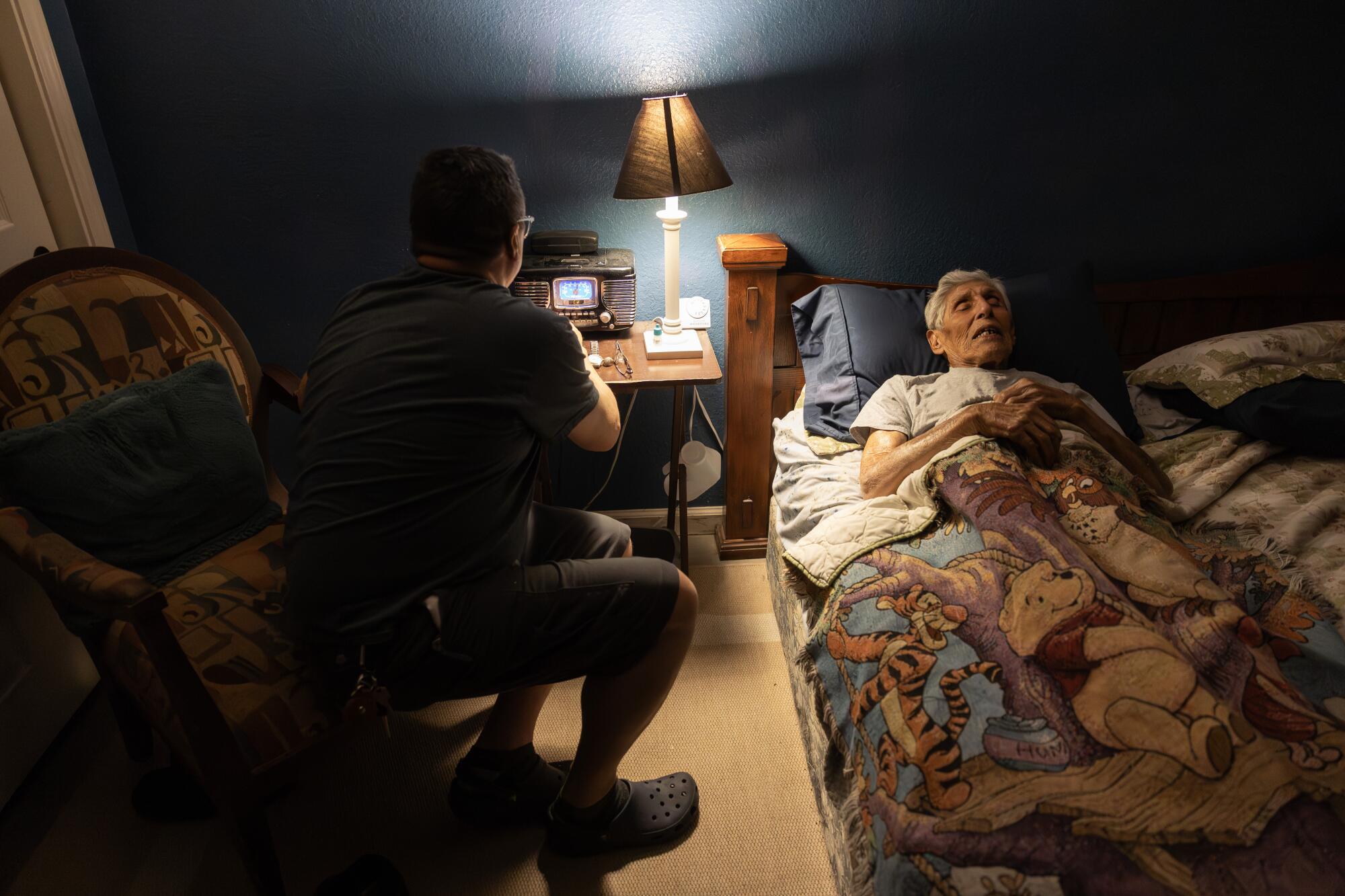
Joe cues Ol’ Blue Eyes on a tape player.
Each place I go
Only the lonely go …
“Love you.”
“Love you, too.”
Joe walks out, closes the door and starts to cry.
More to Read
Sign up for Essential California
The most important California stories and recommendations in your inbox every morning.
You may occasionally receive promotional content from the Los Angeles Times.












